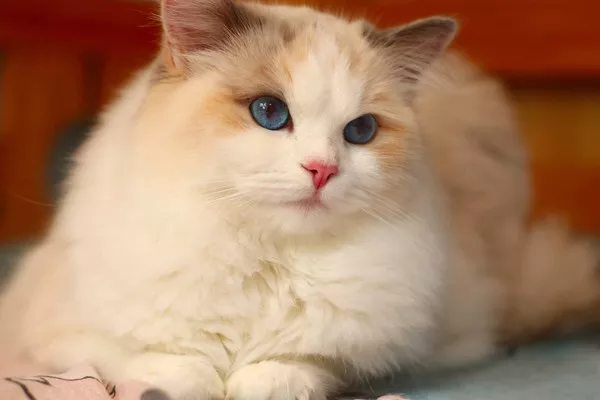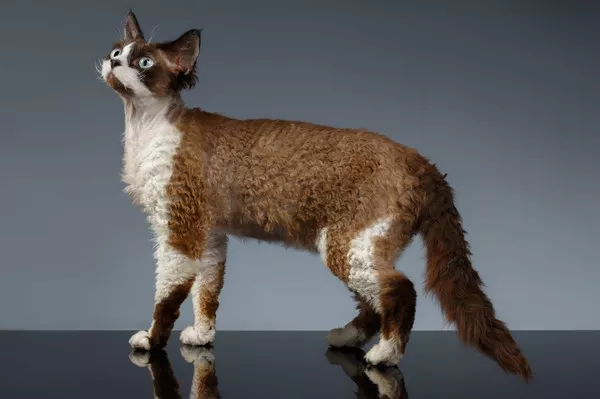Ragdoll cats are often described as some of the most enchanting feline companions one can have. With their striking blue eyes, semi-longhair coat, and gentle disposition, they have captured the hearts of cat lovers worldwide. But what exactly sets Ragdoll cats apart and makes them so special? In this comprehensive guide, we will explore the unique characteristics, history, and charm that define Ragdoll cats.
The Origin of the Ragdoll Breed
The story of the Ragdoll breed is one of mystery and fascination. It all began in the 1960s when a woman named Ann Baker in Riverside, California, started breeding cats with striking blue eyes, docile personalities, and semi-longhair coats. The foundation cats for this breed were Josephine, a white domestic longhair, and various other cats believed to have been part of Josephine’s offspring.
The breed was named “Ragdoll” because of the cats’ tendency to go limp and relaxed when picked up, much like a child’s soft and floppy ragdoll toy. Ann Baker initially trademarked the name “Ragdoll” and established strict breeding guidelines for the cats she considered true Ragdolls. However, over time, the breed has evolved, and these early restrictions have been relaxed.
Distinctive Physical Characteristics
Ragdolls are known for their striking and distinctive physical characteristics:
Semi-Longhair Coat: Ragdolls have a plush, semi-longhair coat that is soft to the touch. Their fur is relatively low-maintenance compared to some longhaired breeds but still requires regular grooming to prevent matting.
Beautiful Blue Eyes: One of the most captivating features of Ragdolls is their large, deep blue eyes that give them an almost ethereal appearance. Their eye color is a signature trait of the breed.
Large and Muscular Build: Ragdolls are among the largest domestic cat breeds, with males weighing between 12 to 20 pounds (5.4 to 9 kg) and females ranging from 8 to 15 pounds (3.6 to 6.8 kg). Despite their size, they are graceful and elegant.
Color-Pointed Markings: Ragdolls typically have color-pointed markings similar to Siamese cats, with a lighter body color and darker points on the ears, face, paws, and tail. Their body color can come in various shades, including seal, blue, chocolate, lilac, and more.
Docile Expression: Ragdolls often have a gentle and sweet expression, with a slight smile that adds to their overall charm.
The Gentle and Affectionate Temperament
What truly makes Ragdoll cats special is their remarkable temperament. They are renowned for their docile, affectionate, and people-oriented nature. Here are some key characteristics of Ragdoll cat behavior:
1. Laid-Back and Relaxed
Ragdolls are known for their tendency to go limp when picked up, hence their name. This unique behavior adds to their appeal, as it makes them incredibly easygoing and adaptable cats.
2. Affectionate Companions
Ragdolls thrive on human companionship and affection. They often enjoy being in the company of their family members and will readily seek out cuddles, lap time, and physical contact.
3. Gentle and Patient
These cats are known for their gentle disposition. They are usually good with children and other pets, making them a great choice for families.
4. Vocal and Communicative
Ragdolls are not as vocal as Siamese cats but can be quite talkative. They may engage in soft conversations with their owners, adding to their endearing personality.
5. Playful Yet Calm
While they have playful moments, Ragdolls are generally not overly active or hyper. They have a calm demeanor and enjoy interactive playtime with their human companions.
6. Follow You Everywhere
Ragdolls often form strong attachments to their owners and like to follow them around the house, being involved in whatever activities are taking place.
Ragdolls and Their Dog-Like Traits
Ragdoll cats are often likened to dogs because of their dog-like traits, further contributing to their unique charm:
Fetch: Some Ragdolls have been known to play fetch, retrieving small objects and bringing them back to their owners.
Walking on a Leash: With proper training and a cat harness, many Ragdolls can be taught to walk on a leash, enjoying outdoor adventures with their humans.
Loyalty: Ragdolls often exhibit a strong sense of loyalty to their owners and may form a close bond similar to the bond between a dog and its owner.
Social Nature: These cats are highly social and enjoy interacting with guests, greeting them at the door, and even participating in conversations.
Caring for Your Ragdoll Cat
To ensure your Ragdoll cat thrives and remains happy and healthy, here are some essential care considerations:
1. Regular Grooming
Due to their semi-longhair coat, Ragdolls require regular grooming to prevent matting and reduce shedding. Brushing them a few times a week can help maintain their coat and minimize hairballs.
2. Play and Mental Stimulation
While they have a calm demeanor, Ragdolls still need play and mental stimulation. Provide interactive toys, puzzle feeders, and playtime to keep them engaged.
3. Proper Nutrition
Feed your Ragdoll a balanced and high-quality cat food that meets their nutritional needs. Consult with your veterinarian for guidance on portion sizes and dietary requirements.
4. Regular Veterinary Check-ups
Routine veterinary care is essential to monitor your cat’s health and address any potential health issues promptly. Vaccinations, flea control, and dental care should also be part of their healthcare routine.
5. Social Interaction
Ragdolls thrive on social interaction. Spend quality time with your cat, offering affection, cuddles, and companionship.
Conclusion
Ragdoll cats are undeniably special, thanks to their distinctive physical characteristics, gentle temperament, and dog-like traits. Their ability to form deep bonds with their human companions makes them wonderful additions to households seeking affectionate and laid-back feline companions. If you’re considering adding a Ragdoll cat to your family, you can look forward to the delightful experience of sharing your life with one of these charming and unique feline friends.

























